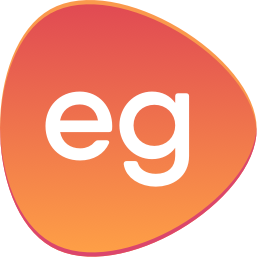How To Build An Effective User-Generated Content Strategy
Here is how to ensure successful implementation of user-generated content.
1. Develop A User-Friendly Toolkit That Makes It Simple For Users To Create Training
Develop a central hub where users can find and share knowledge on how to create training. Make it as appealing and as easy to use as possible. It could be a wiki, an Intranet page, a WordPress site, or even part of the portal to your Learning Management System (if you have one).
Within that hub, develop and/or curate key resources, including industry best practices, how to get started/create training content, examples, brand, and/or graphics guidelines, templates, how/where to share finalized content, and how to reach the learning team with questions and feedback. You might even develop a wizard or set of questions that helps users figure out what they need and whether training is really the answer for their business issue.
2. Provide A Platform That Enables Users To Easily Create And Share Training Content
Give users access to an intuitive platform for developing and deploying content; don’t expect them to go find one on their own. eLearning software for non-experts has to be easy and intuitive to use, with templates to create content and strong technical support from the tool provider.
The Learning and Development team can play a strategic role in helping source a solution like Easygenerator or Axonify and then continue to provide guidance and enablement to users, teaching subject matter experts to fish on their own.
3. Promote The Use Of Video
The use of video for training continues to skyrocket – in large part because it’s accessible on any connected device, and also because it’s affordable to create using tools at hand, like a smartphone. Video can complement eLearning courses and even be embedded within them. It adds a level of personalization and connectedness – and users can generate their own video as quickly as content changes.
4. Leverage Feedback And Analytics
Solicit user feedback and gather analytics to continually improve what you offer. User feedback can come from a variety of sources, including comments on an enterprise social network, ratings on the quality of a course, and emails and conversations. The important thing is to pay attention to what users are saying about the quality and value of the training to them.
Leverage back-end analytics to track usage and performance-related data that are relevant to your business: e.g. volume of users, geographic location of users, content viewed, average time spent in a course or number of questions answered incorrectly in a course. Together with user feedback, you’ll have a goldmine for ways to improve existing and future training.
5. Build Awareness By Working With HR, Regional Teams, And Senior Leaders
Compliance training is typically bespoke produced and high profile or strategic projects are typically handled by Learning and Development teams or outsourced to third party experts. For everything else, user-generated eLearning is very effective for scaling the learning department and enabling users who have knowledge and want to share it with others in the organization.
6. Remember That User-Generated Content Is Not The Answer For Everything
User-generated training is not appropriate in all situations; the industry of the enterprise and its internal culture will dictate many of these. For example, safety and compliance training is typically seen as high stakes and may not be handed off to users. Follow the guiding principles in your organization – but don’t be afraid to challenge them either. User-generated eLearning can be very effective; start small and prove its value.
More Tips On Making User-Generated eLearning A Success
Here are 5 more tips to create effective user-generated content.
- Set up an easy flow for the whole process, from creation to publishing.
- Select tools that are easy to use with no learning curve.
- Start small, start advocating the authoring software, set up webinars, and use your internal communications team, HR team, and social media to raise awareness.
- Facilitate the learners, make it easy for them to give feedback, and use that feedback to improve the process and tools.
- Track and measure your success – cost savings, courses completed, learner satisfaction.
Related articles:
1. Managing The Shift To User-Generated Content: 3 Case Studies
2. Free eBook: Changing eLearning Dynamics In The Enterprise To User-Generated Content


